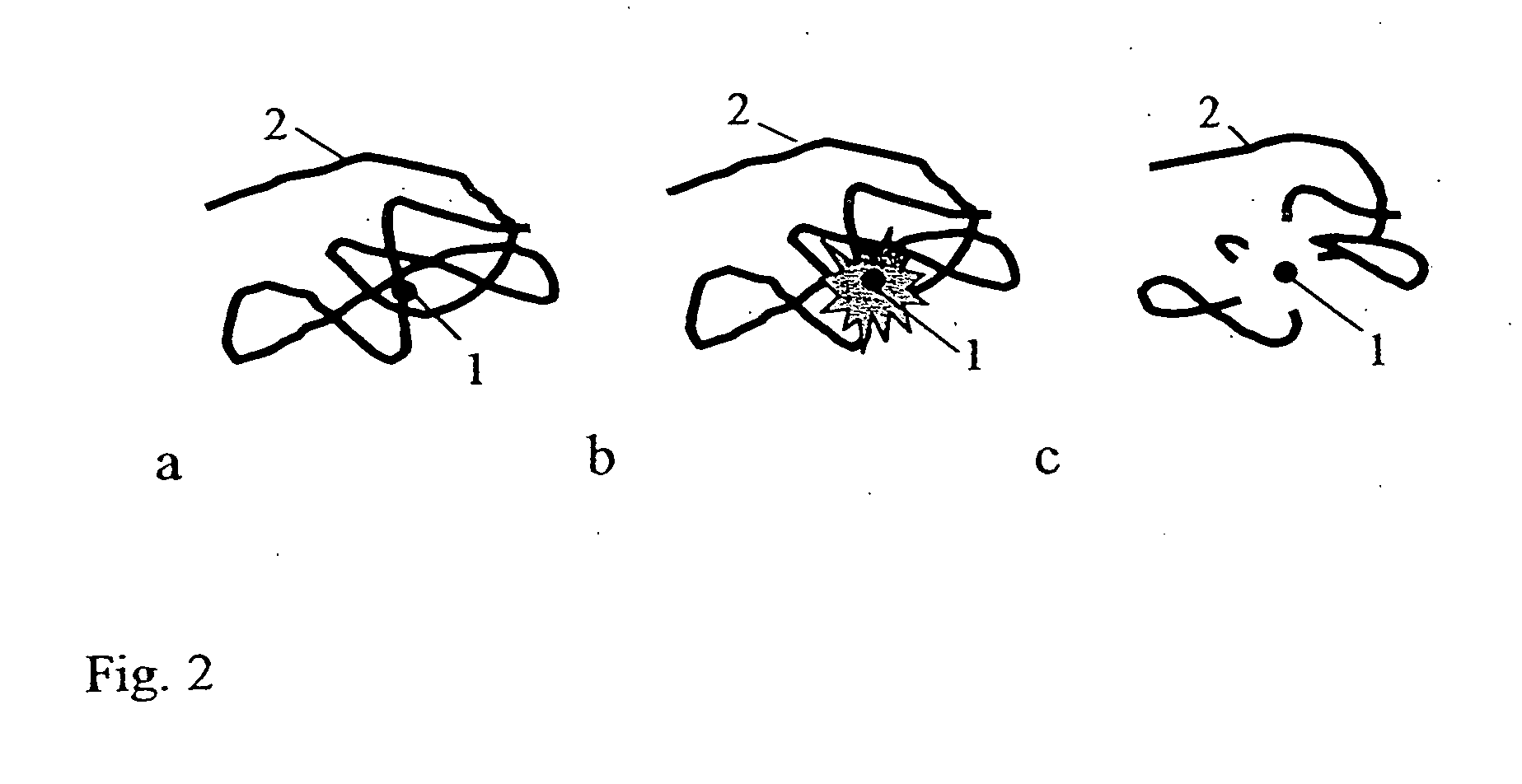Method for the simultaneous dissection in specific positions of filiform organic molecular chains, in particular dna
a specific position and molecular chain technology, applied in the field of simultaneous dissection in specific position of filiform organic molecular chains, can solve the problems of rapid loss of absorbing effect, etc., and achieve the effect of small volume area, low efficiency of local absorption and energy conversion, and increased radiation conversion efficiency
- Summary
- Abstract
- Description
- Claims
- Application Information
AI Technical Summary
Benefits of technology
Problems solved by technology
Method used
Image
Examples
Embodiment Construction
The present invention will now be described in more detail by way of the following schematic example. The figures show:
FIG. 1 a-e the schematic flow of the process by using one single molecular strand,
FIG. 2 a-c demonstrates certain difficulties when dissecting long-stretched molecules which show a three-dimensional folding and
FIG. 3 a-c shows the possible solution for avoiding the difficulties according to FIG. 2 a-c.
DESCRIPTION OF THE PREFERRED EMBODIMENTS
For the present invention nanoparticles in the range of between 1 nm and 150 nm are used. In the example, gold nanoparticles 1 having a typical diameter of 15 nm are placed along a DNA strand 2 by a specific linkage to the sequence desired and are then subject to the radiation of the appropriate kind of energy (light). For this purpose, the nanoparticles 1 are first provided with a short DNA molecule 11 with more than ten bases, whereby only four of them are shown in FIG. 1b and c to allow a clearer overview. The sequence o...
PUM
| Property | Measurement | Unit |
|---|---|---|
| wavelength | aaaaa | aaaaa |
| high-energy radiation absorption | aaaaa | aaaaa |
| size | aaaaa | aaaaa |
Abstract
Description
Claims
Application Information
 Login to View More
Login to View More - R&D
- Intellectual Property
- Life Sciences
- Materials
- Tech Scout
- Unparalleled Data Quality
- Higher Quality Content
- 60% Fewer Hallucinations
Browse by: Latest US Patents, China's latest patents, Technical Efficacy Thesaurus, Application Domain, Technology Topic, Popular Technical Reports.
© 2025 PatSnap. All rights reserved.Legal|Privacy policy|Modern Slavery Act Transparency Statement|Sitemap|About US| Contact US: help@patsnap.com



